-
EngineTurbo 2.0L I4
-
Power264 HP / 269 LB-FT
-
Transmission6-Speed Auto
-
DrivetrainAll-Wheel Drive
-
Curb Weight3,706 LBS
-
Seating2+3
-
Cargo71.5 CU-FT (max)
-
MPG20 City / 27 HWY
The launch of the 2013 Hyundai Santa Fe is a bigger deal than you might think. It's not just the third-generation of the automaker's most popular crossover – it officially marks the end of what will forever be known as Old Hyundai. Every single product in the company's stable is either brand new or significantly refreshed, and the well-liked Tucson that kicked off this whole product renaissance is officially the oldest vehicle sitting inside your local Hyundai dealer. (Well, unless they have some of the now-dead Veracruz CUVs still sitting out back.)
What was once a quiet little caterpillar has indeed become one hell of a butterfly.
But that's not the only reason why the 2013 Santa Fe launch is a big deal. Hyundai has an opportunity to capture some midsize crossover buyers it hasn't won over in the past few years. Elsewhere in the Korea, Inc. empire, Kia is currently kicking major butt in this segment, having sold over 130,000 Sorento crossovers in 2011 compared to the Santa Fe's 74,391.
So there's a lot riding on this final stage of Hyundai's metamorphosis, not the least of which is continuing the brand's impressive streak of sales expansion. Does this 2013 Santa Fe have what it takes to climb to the top of the midsize crossover class, officially sealing Hyundai's place as a player in nearly all of the most often-shopped segments (minus trucks, of course)? We headed to Park City, Utah to find out.
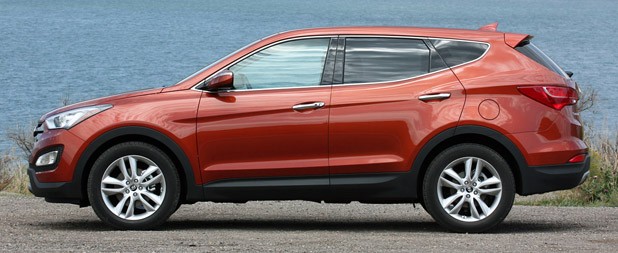
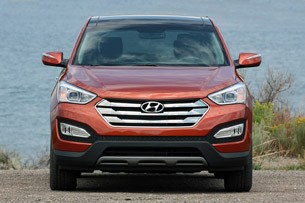
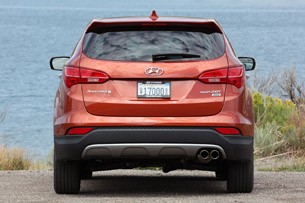
Before we dive in, let's clarify the whole nomenclature strategy a bit. We drove the 2013 Santa Fe Sport – the five-passenger model that effectively replaces the outgoing 2012 model. Hyundai will soon be offering a long-wheelbase, seven-passenger model, simply called Santa Fe, but it technically replaces the now-dead premium-minded Veracruz in the automaker's lineup. The larger Santa Fe (non-Sport) will launch later in the 2013 model year, and Hyundai isn't quite done fine-tuning it yet. We only drove the Santa Fe Sport, and thus, it's the one we'll be focusing on.
Hyundai is the only carmaker offering this two-wheelbase strategy on a unibody crossover in the United States (Nissan has done this with its popular Qashqai overseas). Compared to the Sport, the seven-passenger Santa Fe offers an additional 8.5 inches of overall length, rides on a four-inch longer wheelbase and only has tenths-of-an-inch differences in both width and height. The larger Santa Fe weighs in at 3,869 pounds in front-wheel-drive trim – a surplus of 300 pounds versus the Sport.Hyundai is the only carmaker offering this two-wheelbase strategy on a unibody crossover in the United States.
But let's pause and talk about weight for a moment. Hyundai truly drilled the Santa Fe's reduced girth into our brain during our stint in Park City, working the weight-saving numbers into lunch menus and even had the digits printed on rocks outside of our hotel. Those all-important numbers: 266 and 397. Compared to the 2012 Santa Fe, the Sport is a full 266 pounds lighter, and compared to the 2012 Veracruz, the 2013 seven-passenger Santa Fe sheds 397 pounds of unnecessary heft, despite offering more amenities and safety features. All of this was done through the use of higher-strength steel – the result of a nearly $10 billion investment in Hyundai's own steel plant to provide stronger, lighter materials for future vehicles.
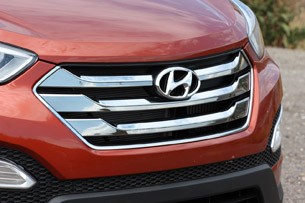
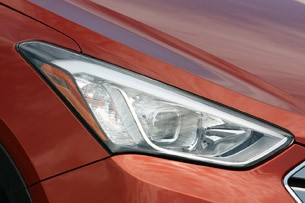
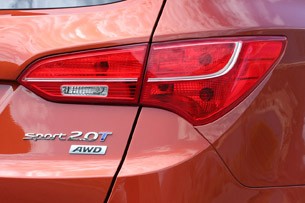
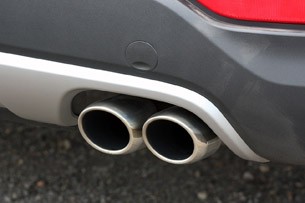
Dimensionally, the 2013 Santa Fe Sport hasn't changed too much from the model it replaces. Overall length has grown by half an inch (184.6 total), width has been reduced by four-tenths of an inch (74.0), the new car is nearly two inches shorter in height (66.1) and the wheelbase remains exactly the same (106.3).
The CUV's styling, on the other hand, is drastically different, incorporating the next-generation of Hyundai's "Fluidic Sculpture" design language, dubbed "Fluidic Precision." That means the new Santa Fe Sport isn't quite as swoopy as say an Elantra or Sonata, but instead focuses more on taut, refined styling elements. Up front, Hyundai's large hexagonal grille is positioned in a more upright manner, flanked with large headlamp and foglamp clusters. The headlamp units feature LED accent lighting, which do not serve as daytime running lights, and squared-off projector-beam halogen lights are nestled inside. Xenons, however, are not available.It isn't quite as swoopy as say an Elantra or Sonata, but instead focuses more on taut, refined styling elements.
From the profile, a strong character line extends along the body from the front wheel well and tapers off just before the rear door handle, but then picks up just before the C pillar and integrates nicely into the wraparound taillamps. The unique design of the five-passenger Santa Fe Sport incorporates a greenhouse that is raked upward in the rear, while the seven-passenger crossover feature a more traditional, larger glasshouse that better communicates its rear-cabin spaciousness. Sport models come standard with 17-inch alloy wheels, though all 2.0T models like our test vehicle are fitted with five-spoke 19-inch rollers wrapped in P253/55R19 Continental CrossContact LX Sport all-season tires.
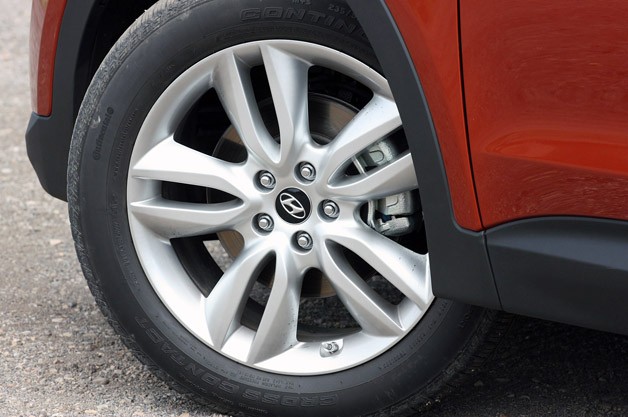
At the rear, the Sport once again wears a unique design scheme, with smaller, more stylized taillamps featuring a thin line of brightwork through the lens caps. A strong U-shaped character line connects the far ends of the taillamps down the middle of the tailgate, and while it's certainly a fresh, modern design fitting with the rest of the Santa Fe's styling, we can't help but notice that it looks awfully familiar (see also: Acura RDX).
Speaking of familiar, if you've sat in any of Hyundai's latest products, the interior of the 2013 Santa Fe will not surprise you in any way. But that's not a bad thing – not even slightly. Like other cars in the automaker's stable, the hexagonal grille is mimicked front and center on the Santa Fe's dash, with large, angular air vents serving as bookends to an eight-inch touchscreen display (optional as part of the $2,900 Technology Package, which also requires the $2,450 Leather and Premium Package). The center stack gets narrower as it flows down toward the transmission tunnel, where the dual-zone climate control is housed and operated by a small set of cleanly organized buttons and a big ol' knob to operate the fan speed.The interior of the 2013 Santa Fe will not surprise you in any way, but that isn't a bad thing.
Talk about a comfortable, well-appointed interior, though. The dashboard and doors are outfitted with high-quality leather and soft-touch materials, accented with small amounts of aluminum and wood trim. The whole cockpit looks and feels truly upscale; everything from the leather used on the steering wheel to the plastics used on the door trim to even small details like the window switches and climate control buttons are top-notch. The whole cabin generally feels warmer and more inviting than other midsize crossovers like the Ford Edge or Toyota Venza. It's a quiet cabin, too. Even with the sunshade retracted on our tester's optional panoramic sunroof, there was very little wind noise to speak of during our drive through the mountains of Utah, and road noise from those 19-inch tires is virtually inaudible.
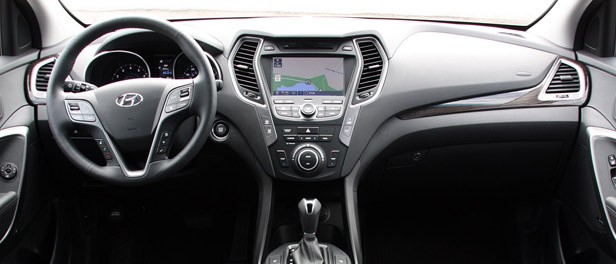
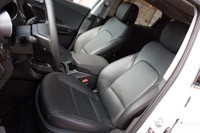
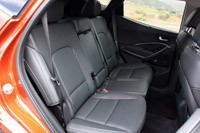
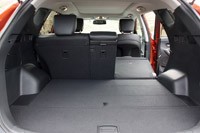
Behind the front seats is a 40/20/40 split bench seat in the five-passenger Sport, with ample amounts of both head- and legroom. Fold the rear seats flat and you'll find 71.5 cubic feet of total cargo capacity – nearly seven cubes less than the 2012 model, though still decently capacious. For buyers who need maximum people-and-thing-schlepping capability, just wait for the seven-passenger Santa Fe, which not only offers 80 cubic feet of storage space, but can also be configured as a six-passenger vehicle with two captain's chairs in the second row. We're told that the third row seats fold cleanly into the floor to allow for a completely flat load space with both rows stowed.
Back to the Sport, though. The base engine is Hyundai's naturally aspirated 2.4-liter Theta II GDI inline four-cylinder, good for 190 horsepower and 181 pound-feet of torque, which – like all configurations of the Santa Fe – can be mated to both front- or all-wheel drive. We don't doubt this base powerplant will be fine for the majority of shoppers (read: we weren't able to test it), and the fuel economy numbers certainly stack up nicely. Front-wheel-drive Sport models with the 2.4-liter are expected to achieve 22/33 miles per gallon (city/highway), while AWD models are rated at 21/28.The engine you'll really want to focus on, however, is the 2.0-liter turbocharged Theta II.
The engine you'll really want to focus on, however, is the 2.0-liter turbocharged Theta II. This is the same engine used in the Sonata Turbo, though output ratings have dropped slightly to 264 hp and 269 lb-ft in the Santa Fe Sport. Fuel economy looks good here, as well, with the turbo motor rated at 21/31 mpg with front-wheel drive and 20/27 mpg with all-wheel drive.
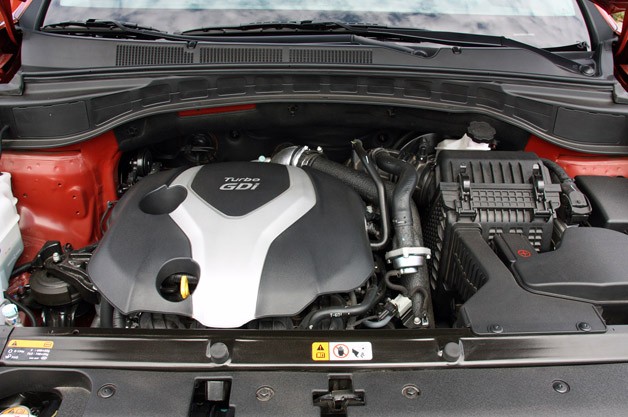
Hyundai only had 2.0T models with all-wheel drive available for us to test, largely in part to the location and drive route. Park City, Utah sits about 7,000 feet above sea level, and as executive editor Chris Paukert pointed out in his recent review of the 2013 Volvo S60 T5, naturally aspirated engines can lose up to 20 percent of their power output at these high altitudes. Turbocharged mills, on the other hand, can cut that number by as much as two-thirds.
Compared to the 2012 Santa Fe's 3.5-liter V6, the forced-induction four loses 12 hp and gains 19 lb-ft of torque, but because of the twin-scroll turbocharger design, that full 269 lb-ft of thrust is delivered as low as 1,750 RPM, compared to the old 3.5's torque delivery of 248 lb-ft at 5,000 RPM. Trust us, you absolutely will not miss the V6.The forced-induction four loses 12 hp and gains 19 lb-ft of torque.
Elevation issues aside, mountain roads like these are full of challenging twists and turns and ups and downs, and the Sport 2.0T just ate those gorgeous stretches of pavement right up. Despite the six-speed automatic transmission's tendency to hunt for gears, mostly due to the steep grades of our test route, the 2.0T never felt underpowered or overworked. Once we finally got the Sport on flatter surfaces, the transmission settled down and let the low-end power do most of the work for passing and light acceleration. You can't get a manual transmission in any configuration of the Santa Fe, but Hyundai does offer its Shiftronic manu-matic function that can only be operated by the PRNDL shifter on the center console. It's not bad, and unless you're faced with steep grades on a daily basis, just leave the gear lever in D and let the transmission do its thing.
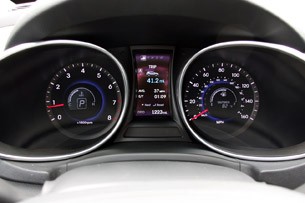
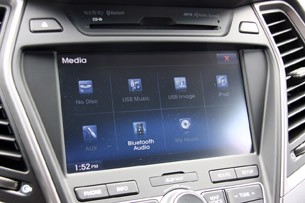
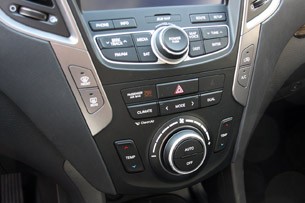

Complaints? The throttle isn't as linear as we'd like, feeling a bit vague on initial tip-in. And while having all 269 lb-ft of twist from 1,750 to 3,000 RPM is nice, there's a sort of dead zone until you get the full grunt of the 264 hp up at 6,000 RPM. That said, we'd need to get the Santa Fe Sport out of the mountains to really see how the powertrain struts its stuff. But even based on this short experience at high altitude, we can say that the Sport 2.0T combination is truly sweet.
The larger Santa Fe will initially be offered only with Hyundai's 3.3-liter Lambda II V6 – the same unit found under the hood of the new Azera – that makes 294 hp and 252 lb-ft. We say "initially" because there's rumor that Hyundai will eventually put the 2.0T engine in the long-wheelbase vehicle, but won't be offering it at launch simply to reduce the number of total build combinations. "We can do it," Hyundai's vice president of corporate and product planning Mike O'Brien told us. And don't be surprised to see that configuration show up "at some point," reiterated North American President and CEO John Krafcik.The Sport performed admirably on Utah's silky smooth mountain roads, where the crossover delivered a comfortable yet confident ride.
But that turbo engine isn't the only part of the Santa Fe package deserving of praise. Hyundai uses a MacPherson front strut and a fully independent multil-ink rear setup here in the Sport, the latter of which not only allows for better manners on the road, but also improves overall cabin space thanks to its in-wheel design. The Sport performed admirably on Utah's silky smooth mountain roads, where the crossover delivered a comfortable yet confident ride. But once we headed off the beaten path and onto some rougher forest trails, the Santa Fe really showed us what it's made of.
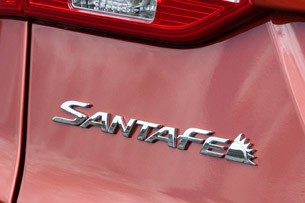
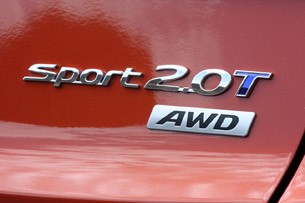
In addition to a new suspension design, Hyundai has also fitted a new Active Cornering Control all-wheel-drive system with torque vectoring and active braking. It's nothing new – other automakers (Ford, for example) have used similar technology – but it works quite well on the Santa Fe. We blasted down some stone-laden dirt roads at a relatively decent clip, and even when trying to get the Sport to slip up by entering a corner too fast or applying full throttle while exiting a very slow bend, the Santa Fe never spun a tire, even on the loose road surface. Back on the pavement, the Sport felt controlled and balanced during turns, with a to-be-expected, crossover-appropriate amount of body roll.
We'll admit to getting our hopes up a bit regarding the steering, especially after our recent stint in the 2013 Elantra GT. The compact five-door was the first vehicle to use Hyundai's new driver-selectable three-mode steering, and happily, this on-the-fly rack-adjuster is also available here on the Santa Fe Sport. Unfortunately, we never quite found a steering mode that we truly loved in the Santa Fe. It's certainly not bad in this application, but we wish the electronic rack offered a bit more in the way of feedback. Normal mode seemed to get things done just fine, but Sport mode doesn't have quite the same level of involvement as it did in the Elantra GT. Chalk that up to Santa's bigger bones.
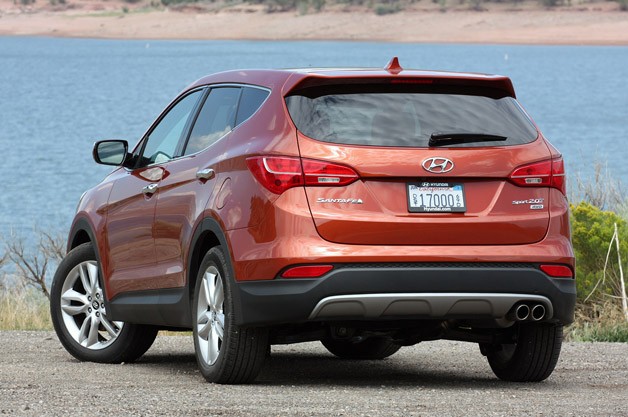
The first crop of 2013 Santa Fe Sport models are hitting dealerships as you read this, with pricing starting at a cool $24,450, not including $825 for destination. Stepping up to the Sport 2.0T will set you back $27,700, and if you spring for a fully optioned model like our Canyon Copper test car, you'll be plunking down $35,625 all-in. And considering that we now live in the world of the $37,000 (smaller) Ford Escape, this Korean package is indeed attractive.
Hyundai is currently on track to sell over 700,000 vehicles this year, and if this 2013 Santa Fe Sport can take off with rocket force like the rest of the automaker's segment-besting offerings, 700K should be a piece of cake. This new Sport is a truly great all-rounder, though no particular aspect of it feels truly revolutionary or exciting. That's fine, though – just by creating a wholly solid product, Hyundai has taken its Santa Fe from also-ran status to a vehicle that's certainly worthy of your attention.
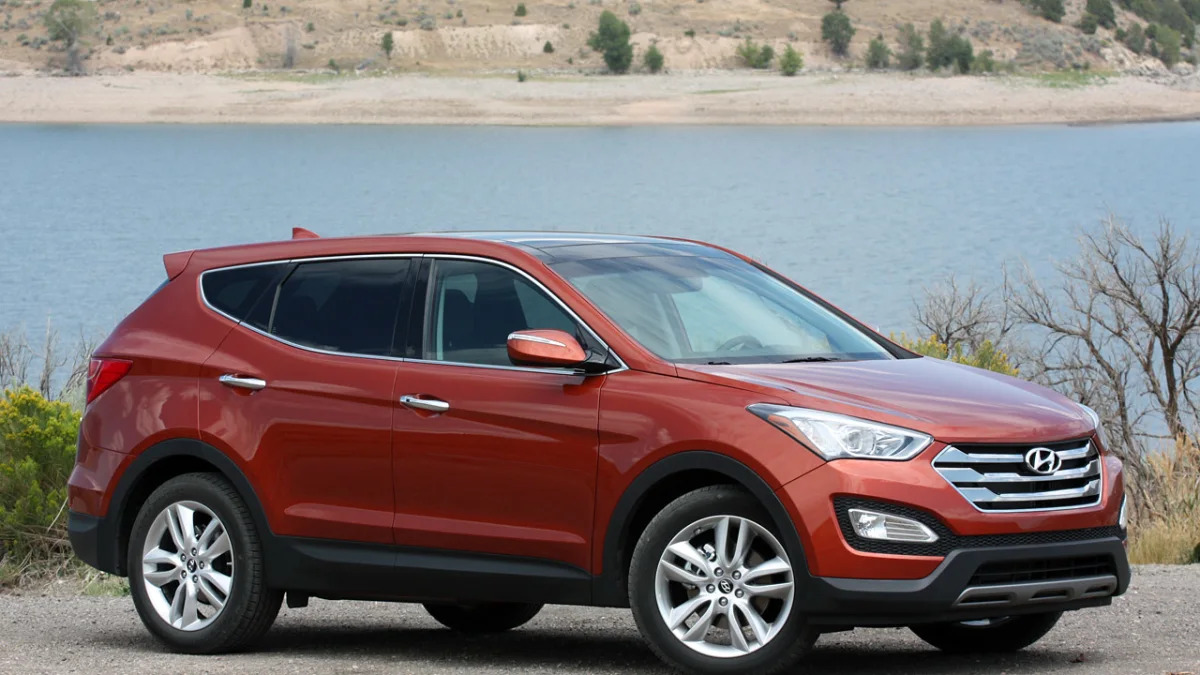









Sign in to post
Please sign in to leave a comment.
Continue